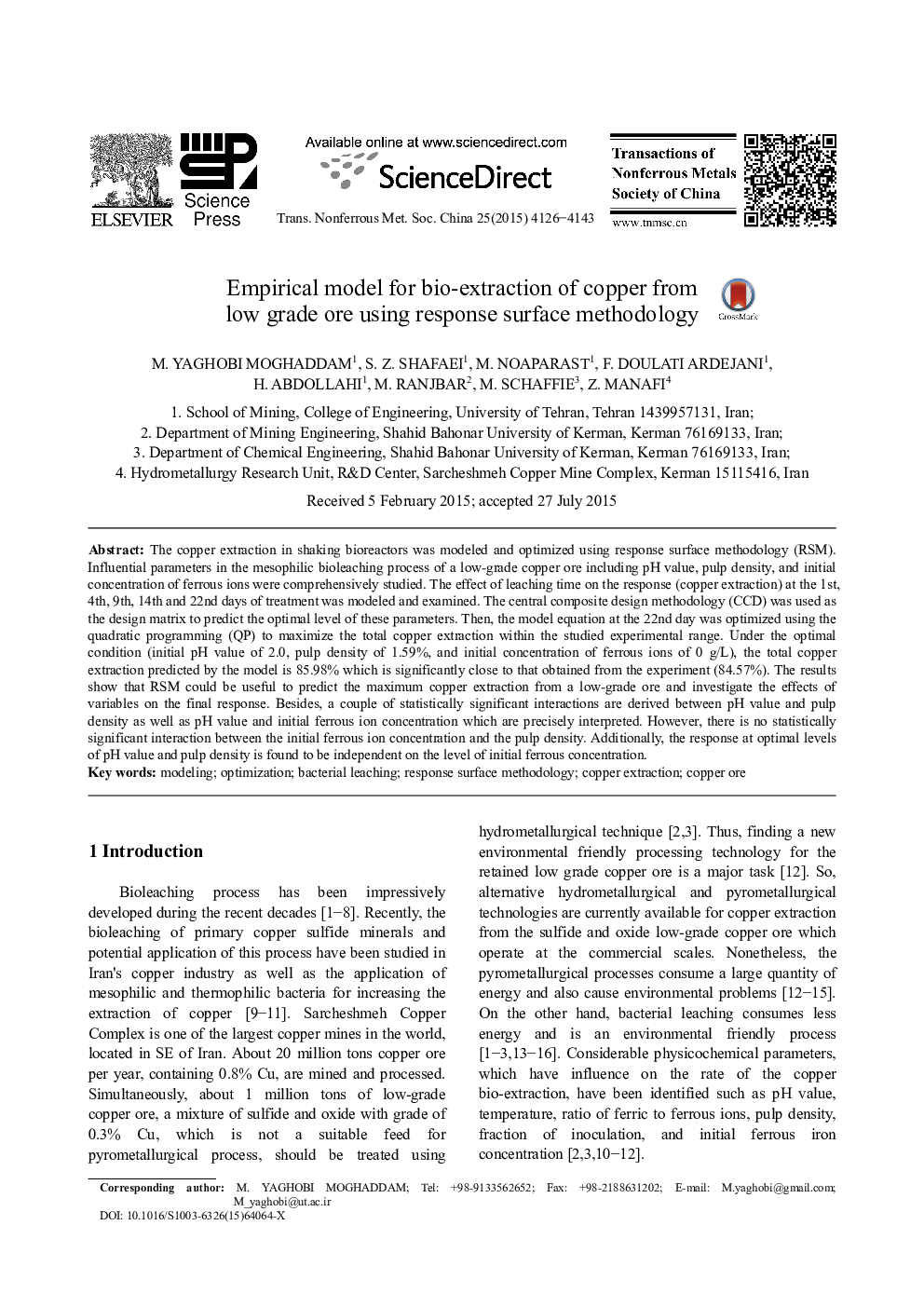| Article ID | Journal | Published Year | Pages | File Type |
|---|---|---|---|---|
| 1635802 | Transactions of Nonferrous Metals Society of China | 2015 | 18 Pages |
Abstract
The copper extraction in shaking bioreactors was modeled and optimized using response surface methodology (RSM). Influential parameters in the mesophilic bioleaching process of a low-grade copper ore including pH value, pulp density, and initial concentration of ferrous ions were comprehensively studied. The effect of leaching time on the response (copper extraction) at the 1st, 4th, 9th, 14th and 22nd days of treatment was modeled and examined. The central composite design methodology (CCD) was used as the design matrix to predict the optimal level of these parameters. Then, the model equation at the 22nd day was optimized using the quadratic programming (QP) to maximize the total copper extraction within the studied experimental range. Under the optimal condition (initial pH value of 2.0, pulp density of 1.59%, and initial concentration of ferrous ions of 0 g/L), the total copper extraction predicted by the model is 85.98% which is significantly close to that obtained from the experiment (84.57%). The results show that RSM could be useful to predict the maximum copper extraction from a low-grade ore and investigate the effects of variables on the final response. Besides, a couple of statistically significant interactions are derived between pH value and pulp density as well as pH value and initial ferrous ion concentration which are precisely interpreted. However, there is no statistically significant interaction between the initial ferrous ion concentration and the pulp density. Additionally, the response at optimal levels of pH value and pulp density is found to be independent on the level of initial ferrous concentration.
Keywords
Related Topics
Physical Sciences and Engineering
Materials Science
Metals and Alloys
Authors
M. YAGHOBI MOGHADDAM, S.Z. SHAFAEI, M. NOAPARAST, F. DOULATI ARDEJANI, H. ABDOLLAHI, M. RANJBAR, M. SCHAFFIE, Z. MANAFI,
